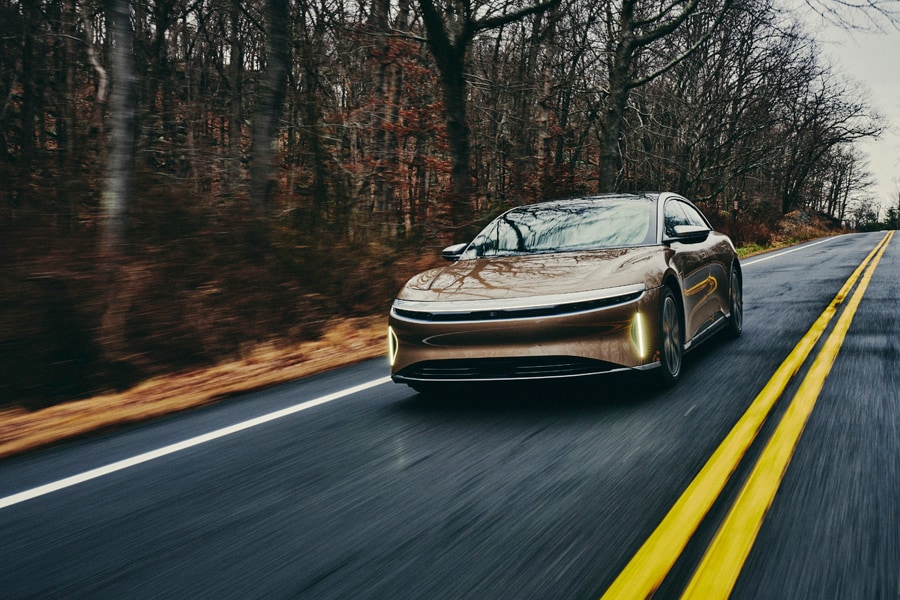
Why this could be a critical year for electric cars
While electric vehicles still account for a small slice of the market, their rapid growth could make 2022 the year when the march of battery-powered cars became unstoppable, erasing any doubt that the internal combustion engine is lurching toward obsolescence
 The Lucid Air near Bear Mountain, N.Y., Dec. 28, 2021. Chasing Tesla, companies like Lucid are finding that starting an E.V. from scratch has its advantages. (Bryan Derballa/The New York Times)
The Lucid Air near Bear Mountain, N.Y., Dec. 28, 2021. Chasing Tesla, companies like Lucid are finding that starting an E.V. from scratch has its advantages. (Bryan Derballa/The New York Times)
Sales of cars powered solely by batteries surged in the United States, Europe and China last year, while deliveries of fossil fuel vehicles were stagnant. Demand for electric cars is so strong that manufacturers are requiring buyers to put down deposits months in advance. And some models are effectively sold out for the next two years.
Battery-powered cars are having a breakthrough moment and will enter the mainstream this year as automakers begin selling electric versions of one of Americans’ favorite vehicle type: pickup trucks. Their arrival represents the biggest upheaval in the auto industry since Henry Ford introduced the Model T in 1908 and could have far-reaching consequences for factory workers, businesses and the environment. Tailpipe emissions are among the largest contributors to climate change.
While electric vehicles still account for a small slice of the market — nearly 9% of the new cars sold last year worldwide were electric, up from 2.5% in 2019, according to the International Energy Agency — their rapid growth could make 2022 the year when the march of battery-powered cars became unstoppable, erasing any doubt that the internal combustion engine is lurching toward obsolescence.
“It’s one of the biggest industrial transformations probably in the history of capitalism,” said Scott Keogh, CEO of Volkswagen Group of America. “The investments are massive, and the mission is massive.”
But not everyone will benefit. Makers of mufflers, fuel injection systems and other parts could go out of business, leaving many workers jobless. Nearly 3 million Americans make, sell and service cars and auto parts, and industry experts say producing electric cars will require fewer workers because the cars have fewer components.
©2019 New York Times News Service







